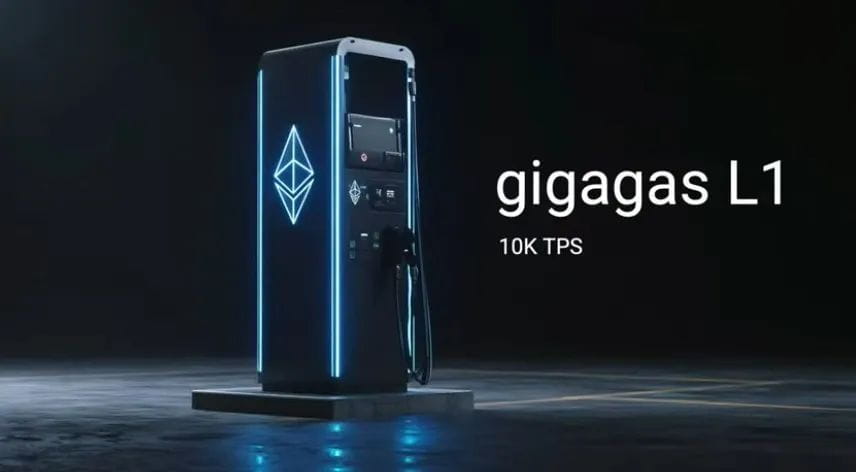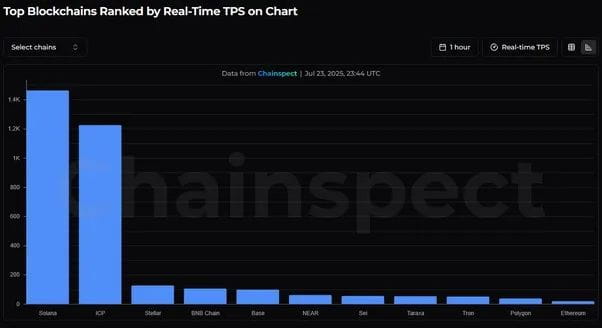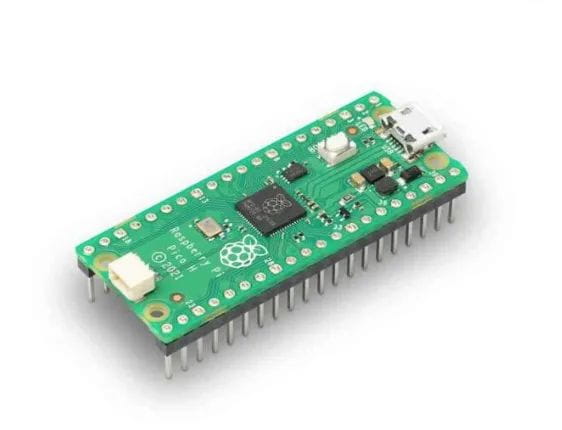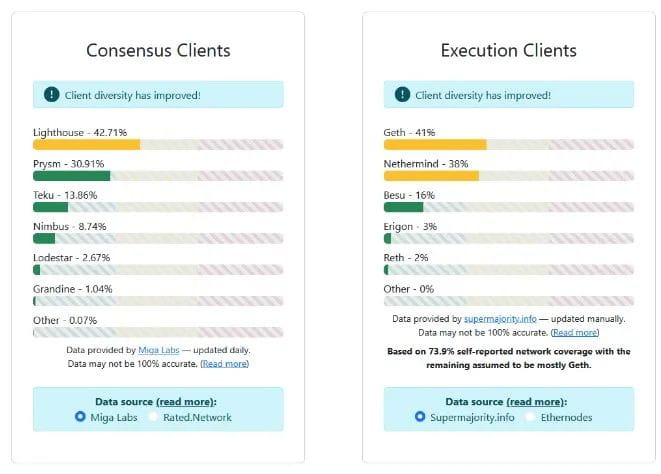Compiled by: imToken
Original link: https://cointelegraph.com/magazine/ethereums-roadmap-10000-tps-using-zk-zkevm-tech-dummies-guide/
Editor's note: Ethereum is moving towards a new era of scaling with 10,000 TPS, and zero-knowledge proof (ZK) technology is becoming a key driving force. This is the first article in our series (Ethereum 10,000 TPS roadmap), which breaks down ZK technology, the zkEVM roadmap, and Ethereum L1 scaling plans in as simple terms as possible. The next article will delve into the challenges of ZK implementation, the evolution of the L2 ecosystem, and the future impact on Ethereum's economic structure.
On July 30, 2025, Ethereum will celebrate the 10th anniversary of its genesis block, and after ten years of exploration, Ethereum's scaling roadmap is also exploring new directions and visions.
Of course, the recent rise in ETH prices has also restored confidence in the community, but what is truly exciting is that after several years of exploration around L2 scaling, Ethereum L1 finally has a credible path to achieve extreme scaling while maintaining maximum decentralization.
In short, from now on, Ethereum's Gas limit and TPS are planned to increase several times each year, validators will no longer re-execute each transaction (editor's note: that is, they do not need to recalculate the state changes of transactions from scratch), but will only verify a zero-knowledge proof (ZK-proof) to prove that these transactions were executed correctly, allowing the underlying network's TPS to increase to tens of thousands of transactions per second.
At the same time, L2 will also scale synchronously, achieving hundreds of thousands or even millions of TPS, and a new type of L2 called 'native Rollup' will operate like programmable sharding, providing the same level of security as L1.
Although these proposals have not yet been formally approved by the Ethereum governance process, they are built on ideas that Vitalik Buterin began exploring in 2017 and have been supported by core researcher Justin Drake of the Ethereum Foundation.
At the EthCC conference in July, Drake stated: 'We are at a critical turning point for Ethereum's scaling, and I firmly believe we are about to enter the GigaGas era for L1 — around 10,000 TPS, and the key to opening this era is zkEVM and real-time proving.'
Drake's ultimate goal is to achieve 10 million TPS for the Ethereum ecosystem within 10 years, but this means that no single blockchain can meet this throughput requirement. The future will inevitably be a 'network of networks' architecture: different L2s will each take on different scenarios, trade-offs, and advantages, collectively expanding the entire ecosystem to meet global demand.

01, Why has Ethereum L1 been unable to scale massively?
While other blockchains have already begun experimenting with more powerful hardware and computing capabilities to expand throughput, Ethereum has maintained a near-ideological commitment to decentralization, with some even feeling an almost 'utopian' obsession.
From the perspective of ETH maximalists, 'data center chains' like Solana have millions of dollars in centralization risk points, and governments can directly target these nodes for transaction censorship. Even chains like Sui, which have lower hardware specifications, have costs and bandwidth requirements that are daunting, thus affecting the degree of decentralization.
In contrast, Ethereum can even run on a Raspberry Pi, this low-barrier design allows over 15,000 to 16,000 public nodes and millions of validators to participate in the network, making it nearly impossible to censor transactions on Ethereum, and giving the entire network a strong resilience against attacks.
Of course, the trade-off is a very slow speed — the current TPS is about 18 to 20 transactions per second, while Solana's TPS is about 1,500 transactions per second.

To some extent, blockchain architecture is inherently inefficient, somewhat like a Google spreadsheet; every time you modify a cell, all computers that have a copy of the spreadsheet must first recalculate the entire sheet before updating it to confirm everything is correct.
Uma Roy, co-founder of ZK technology company Succinct Labs, explained: 'The design of Ethereum aims for anyone to keep up with the network and re-execute all transactions,' which also means that transaction volume cannot be arbitrarily increased since every transaction requires someone to re-calculate.
It is precisely because the mainnet's expansion space is limited while maintaining decentralization that Ethereum had to embark on the controversial path of L2 layered scaling in 2020.
02, How does ZK break the blockchain trilemma?
Ethereum founder Vitalik Buterin once proposed the concept of the 'blockchain trilemma' to describe the difficulty of achieving security, scalability, and decentralization all at once in public chains.
Almost all scaling solutions can only satisfy two of the three aspects at the same time, inevitably sacrificing the third.
Until now.
Zero-knowledge proofs (ZK-Proofs), described by Drake as 'moon math' technology — can mathematically prove that a large number of complex transactions have been executed correctly without revealing transaction details.
The process of generating ZK proofs is very complex, but verifying whether a proof is correct is both fast and lightweight.
Therefore, Ethereum's future vision is: rather than having a bunch of performance-weak Raspberry Pi nodes re-calculate all transactions one by one, it is better to let validators only check a very small mathematical result of the ZK proof.
Uma Roy, co-founder of Succinct Labs, continues to explain, 'Rather than having everyone re-execute all transactions, it's better to provide them with a proof that tells them these operations have already occurred, so anyone can verify this proof without needing to redo the calculations.'
Drake even joked that the future computational load for verifying ZK proofs will be so small that even a $7 Raspberry Pi Pico (which has less than one-tenth the performance of a regular Raspberry Pi) can handle it, without the need for large data centers.

03, zkEVM: The roadmap to 10,000 TPS
A recent message from Sophia Gold of the Ethereum Foundation's protocol coordination team sparked a heated discussion in the community: within the next year, the L1 mainnet may integrate a zero-knowledge proof-driven Ethereum virtual machine (zkEVM).
It is worth noting that many practical explorations of ZK technology actually began with L2 networks. For example, Linea, incubated by Consensys under Ethereum co-founder Joe Lubin, is a 100% EVM-compatible ZK Rollup public chain — any application that can run on Ethereum can run seamlessly on Linea.
Linea even sees itself as an extension of Ethereum and recently announced it would burn 20% of ETH transaction fees to support value flow back to L1.
Declan Fox, the head of Linea, explained that ZK technology provides an answer to the blockchain trilemma: 'The magic of ZK is that we can significantly increase the Gas limit of L1 without making verification more complex.'
He added that as the delay and cost of generating ZK proofs continue to decrease, we can handle higher throughput while keeping hardware requirements for verification extremely low — even a smartwatch can handle the verification work.
However, the community should not be overly optimistic; even if zkEVM successfully integrates into L1 within the next year, it will not directly achieve 10,000 TPS on the first day.
04, Step by step, then accomplish it in an instant
Ethereum currently has five major software clients available to run the network, which means that even if one client encounters a problem, the network will not directly come to a halt like Solana.
In the future upgrade roadmap, Ethereum plans to release two to three modified clients that support ZK verification, allowing validators to choose to verify by checking zero-knowledge proofs (ZK-proofs) instead of re-executing each transaction.

Initially, only a few validators would switch to the new verification model to help identify and fix potential issues in the early stages.
Ladislaus from the Ethereum Foundation's protocol coordination team stated, 'Switching to a snarkified EVM will be a gradual process' — here 'snarkified' refers to the adoption of SNARK-type zero-knowledge proofs.
Users will mainly gradually feel the increase in the Gas limit of L1, which means the network's economic activity capacity is enhanced. Although the transition of L1 to ZK verification will take time, the expansion of the Gas limit is almost imminent.
Last week, the L1 Gas limit was just raised by 22% to 45 million, and researcher Dankrad Feist proposed an EIP suggesting that clients automatically increase the Gas limit three times a year. According to this plan, four years later, Ethereum's mainnet could achieve about 2,000 TPS.
And Justin Drake even further proposed extending this pace by two years to achieve a throughput of 1 gigagas by 2031, realizing about 10,000 TPS.


